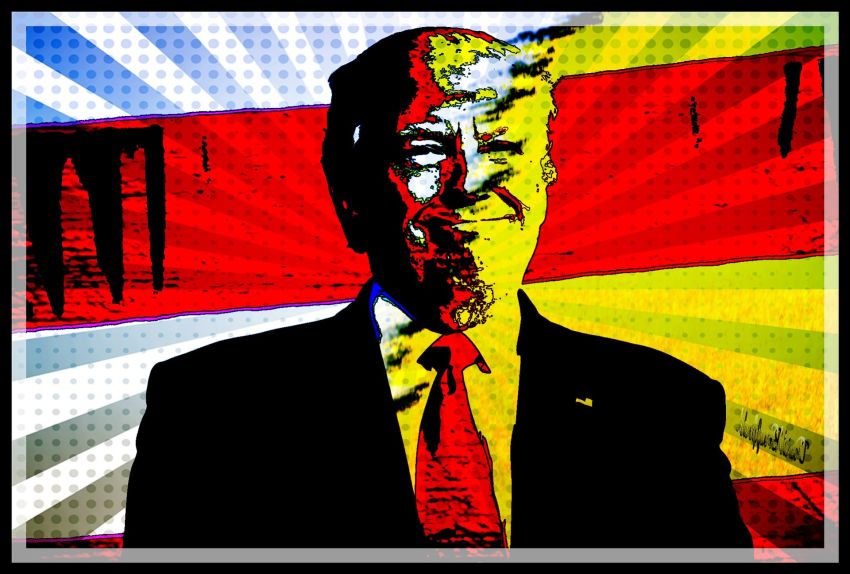
The failure of the January 6 attack on the United States Capitol to overturn the 2020 election led many progressives and socialists to think Donald Trump was finished.
But it has become clearer that the Republican Party remains under Trump’s control.
The Republican Party’s united and concerted drive against the right to vote is justified by Trump’s continued assertion — supported by most Republican lawmakers — that he “won” the election, but was deprived of his victory by widespread electoral “fraud”.
Consequently, their drive against voting rights — which is being drummed up in the rightist media and supported by Republicans in the Senate and House — is just an attempt to “eliminate” this fraud.
Voter suppression laws were rushed through in Georgia on March 25. If this drive succeeds in enough key states, it will guarantee Republican majorities in both houses of Congress in the next two to four years, and a Republican presidency.
In other words, the minority party will have the majority in the government.
Right now, these laws are being legally challenged in some states and will probably reach the Supreme Court — which will be a test of its reactionary majority.
Mass actions by Blacks and their supporters will also come into play to fight against these proposed laws.
Already, widespread denunciation of Georgia’s law resulted in a Major League Baseball game being moved from Atlanta.
Trump jumped in to publicly denounce the move.
It has also resulted in Georgia-based corporations like Delta Airlines and Coca Cola to reverse their earlier positions, and oppose the law.
Trump’s loyal base
Right now, Trump remains the dominant “cult” party leader. No other Republican politician has as much support from the party’s base as Trump and they fear being placed on his public list of enemies.
Trumpism has meant more open racism and authoritarianism. A significant section of the capitalist ruling class supports his authoritarian drive, indicated by the fact that one of the two capitalist parties has fallen into line behind him.
From the start of his campaign to win the Republican nomination in 2016, Trump has consistently projected himself as the strongman who can set the country right. In the debates with his rivals for the nomination, he belittled them as weak and as “losers”.
Coupled with his open racism, his stance rallied Republican voters in the primaries to his promises to “drain the swamp” in Washington, push back African-Americans, turn back refugees from Latin America and immigrants without documents, keep out Muslims, and so on.
Many Republican voters viewed Trump’s authoritarianism with enthusiasm. He created a hardcore base of tens of millions of racist whites of all classes, which remained loyal to him throughout his presidency, and still are.
Between democracy and fascism
There are many forms of capitalist class rule between bourgeois democracy and fascism.
One example is the emergence of a strongman in a period of stagnation and deadlock in the organs of bourgeois democracy, which Marx called Bonapartism, after the 1851 coup of Louis Bonaparte in France.
There are similarities between the situation when Trump was elected and what led up to the coup by Louis Bonaparte (also known as Napoleon III and the nephew of Napoleon Bonaparte). In both cases, there was sharp factionalism between and within the establishment parties.
The result was increasing difficulty in arriving at policies that could be carried out.
Louis was elected president in late 1848. He was skillful in presenting himself as the saviour who could break through the impasse — as Trump was.
Louis Bonaparte was a mediocre political figure, certainly in comparison with his famous uncle. But he was shrewd in maneuvering between the squabbling factions and bolstering his appeal to the public.
Trump is just as mediocre — and ignorant. Many examples of this have been exposed in the media, such as his suggestion that COVID-19 patients ingest disinfectant as a cure. But he was shrewd in tapping into white racists’ fears of Blacks and immigrants and rallying them around himself.
Trump sought to become the supreme leader, not by abolishing Congress, but by using his personal control of the Republican Party to make Congress a rubber stamp for his policies.
At the start of last year, it appeared that Trump and the Republicans could win the election, as the economy was growing.
The COVID-19 pandemic then intervened, and dealt the economy a severe blow. In addition, Trump’s failure to deal effectively with the pandemic — a deliberate miscalculation on his part even if his base accepted his lies about it — turned enough voters against him.
January 6 insurrection
Trump sought to overturn the election by forcing enough Republican-controlled state governments to doctor the results to give him a slim majority in the Electoral College.
He also tried to overturn the results in those states by appealing to the courts. Those attempts failed, and he made once last attempt by organising the January 6 insurrection to prevent Congress from certifying the results.
He had the army behind him in this attempt, evident in the Pentagon’s refusal to intervene with the National Guard for hours, as Congress was dispersed by attackers who took over the Capitol.
Even then, it was not the National Guard but the Washington DC police that intervened, escorting the attackers out of the building and dispersing them without arrests.
The Republican Party is rallying again around Trump, in an attempt to win the elections in 2022 and 2024, by restricting the non-white (especially Black) vote.
The Black-led multiracial movement has the potential to beat this Republican drive back and thwart it.
Developments over the next two to four years are politically and economically unclear, but capitalist politics remains polarised and likely deadlocked on many important issues.
Trump and Trumpism has made a comeback. It is still a danger and force to be reckoned with — even though it is out of power and being held at bay, for now.